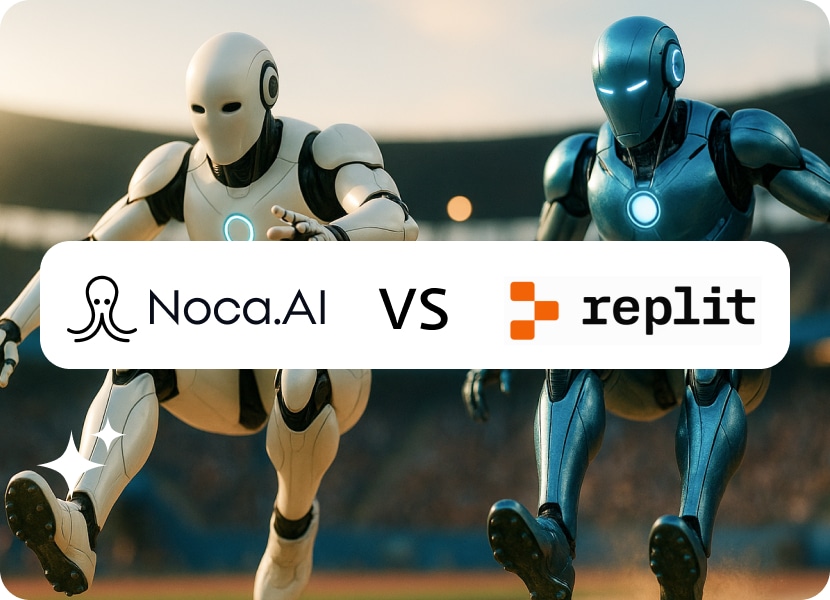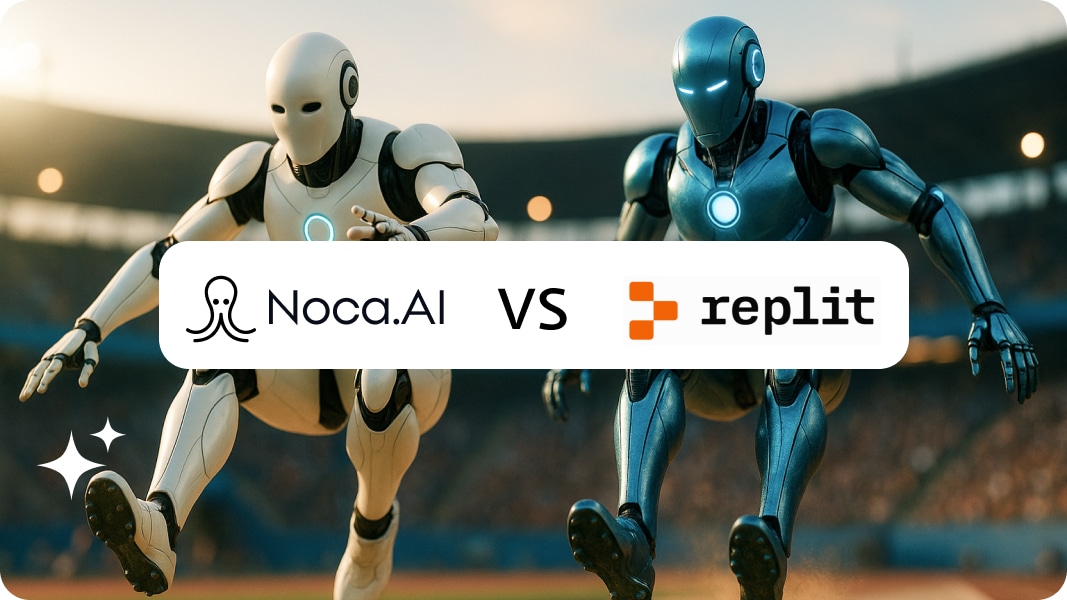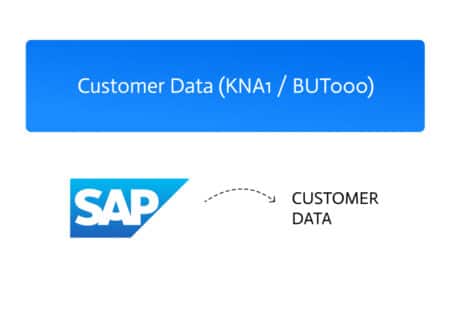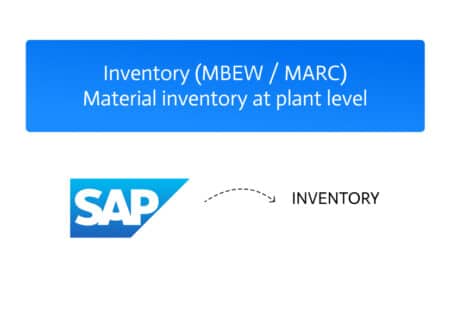

Noca vs Replit: Vibe Coding Comparison
Let’s face it, coding used to be this intimidating club where you needed to memorize arcane commands, debug mysterious errors that came from nowhere, and basically sacrifice your social life to programming. But somewhere along the way, a beautiful shift happened. The rise of “vibe coding” platforms transformed development from a gatekeeping nightmare into something that feels almost… fun? Two contenders are strong leaders of this movement: Noca vs. Replit.
Both promise to make coding accessible, collaborative, and, dare I say it, enjoyable — even allowing you to create a fully functional web application via prompt without writing a single line of traditional code. But which one deserves your precious attention (and possibly your money)?
Quick Recap of Vibe Coding
Before we get into the Noca vs Replit comparison, let’s talk about what “vibe coding” means quickly. It’s emerged as a whole new take on how we code; it’s essentially referring to the whole experience of writing code, with a vibe. It’s like the difference between cooking in a cramped kitchen with dull knives versus having a spacious culinary paradise with every tool at your fingertips.
Vibe coding platforms try to prioritize seamless environments, so one can jump straight into building without the precursory headaches of setup configurations, dependency hell, or the dreaded errors that plagued old-school software development. They’re designed for the new-age dev who wants to create, collaborate, and ship without the traditional friction that makes junior developers cry into their keyboards.
Enter the Contenders: Noca vs. Replit
Replit has been around since 2016, establishing itself as the OG of browser-based coding environments, like your buddy that was into indie bands before they went mainstream, respected, reliable, and followed by adoring fans who swear by it.
Noca, the newer kid on the block, burst onto the scene with a fresh attitude and new perspective, with some seriously slick features. It’s that confident newcomer who walks into the room and immediately makes everyone wonder if they’ve been doing things wrong all along.
Who Gets You Coding Faster?
Here’s where things get interesting. Replit has always prided itself on instant setup. You click, you code. No installations, no configurations, just straight-up development goodness. And honestly? They’ve delivered on that promise for years. Whether you’re spinning up a Python project or a full-stack Node.js application, Replit gets you going fast.
But Noca took that concept and asked the question, “How can this be made even smoother?” Noca AI’s setup makes you feel like it was designed by someone who actually remembers being a confused beginner. The interface anticipates what you need before you know you need it. Launching a new project from scratch doesn’t just give you a blank slate, it provides intelligent suggestions, boilerplate code that actually makes sense, and a development environment that’s intuitive from the first keystroke.
Replit’s setup is solid, so there are no complaints there. But Noca’s approach has this almost psychic quality where the platform seems to know what you want to do. It’s like the difference between a good GPS and one that knows you always stop for coffee on your way to work.
The Question of Collaboration
Let’s talk about working with other humans, because in all honesty, most real-world development is a team sport.
Replit pioneered real-time cooperative programming, and they deserve credit for that. Their multiplayer mode lets multiple devs collaborate on the same code at the same time, with live cursors showing who’s doing what. It’s Google Docs for code, and it works. Educators particularly love this feature for teaching and doing exercises together.
Noca, however, seems to have studied every awkward collaboration moment you’ve ever had and designed around them. Their collaborative features include not just the live editing aspect but also contextual commenting, seamless voice chat integration, and even version control that doesn’t require a PhD to understand. They’ve also nailed something Replit sometimes struggles with: dealing with merge issues in real-time without making everyone panic.
The difference in terms of vibe coding? Replit gives you collaboration tools. Noca creates a collaborative experience. It’s subtle but a significant draw, especially for non-technical users.
Noca vs. Replit: Performance Match-Up
Nothing ruins a coding vibe faster than a laggy environment. You’re in the zone, flying all over the keyboard as you type, and suddenly… buffering, the digital equivalent of someone slamming on the brakes in front of you.
Replit generally offers solid speed and performance, though users sometimes report slowdowns with projects that are bigger than the norm or when the platform is under heavy user loads. Their infrastructure is mature and mostly reliable, but it occasionally shows its age.
Noca shows they’ve learned from what Replit users have complained about in the past. They offer vibe coding infrastructure that is built on more modern architecture, and users consistently report snappier responses as well as far better handling of resource-intensive operations. With prompt to bot, developers can also turn simple natural-language instructions into automated bot actions, further streamlining coding workflows. Large file operations, building, and deploying enterprise infrastructure that might make Replit chug along tend to zip through on Noca. They’ve clearly invested heavily in making sure performance never becomes the bottleneck and ends up hindering your creative process.
The Era of AI Assistance
We can’t talk about modern coding platforms without talking about AI-assisted coding. Both vibe coding platforms have integrated artificial intelligence, but with different philosophies.
Replit’s Ghostwriter is competent, as it offers code suggestions, helps debug, and even explains code snippets. It’s like having a somewhat knowledgeable coding buddy looking over your shoulder. Functional and helpful when you need it, but not that groundbreaking.
Noca’s AI vibe coding integration feels more aware because, as opposed to just autocompleting your code, it understands context at a deeper level. Ask it to refactor a function, and it considers your entire project structure. Request help with a bug, and it doesn’t just point to the problematic line, it does a little extra and explains why it’s problematic and suggests a few other options that might be better. The AI feels less like a fancy autocomplete and more like a junior developer who’s actually paying attention.
Noca vs Replit: Pricing Factor
Let’s address one of the biggest factors: what’s this vibe coding platform going to cost you?
Replit does have a free category that’s actually not bad for hobbyists and students, with the paid versions that start at $7/month for more power and always-on applications. Their pricing is straightforward and has been competitive for years.
Noca’s pricing structure is similarly tiered, starting free for basic projects. Their paid plans are comparably priced but tend to give users more resources and features at each tier. You’re getting more bang for your buck, especially if you’re planning on working on numerous projects simultaneously or if you need robust deployment capabilities.
Neither platform will break the bank, but Noca edges ahead in terms of value proposition. You’re getting newer infrastructure and way better performance, accompanied by polished features for roughly the same investment.
Noca vs Replit: Community
Replit has the advantage of time here. Years of operating means they’ve had time to build a bigger community, which has resulted in a massive template library, extensive educational info, and quite a supportive community. Their annual hackathons are legendary, and they’ve fostered a genuine culture around making coding accessible.
Noca is just beginning to build its community ecosystem, but rapidly, and while it can’t match Replit’s history, it’s attracting developers with its modern platform coupled with a superior DEX. Although the community is understandably smaller right now, it’s growing fast, particularly with those in the industry who want cutting-edge tools and want to be part of something that feels like the future rather than the present.
Nova vs Replit: From Code to Cloud
Getting your project from development to being used by people with vibe coding is where rubber meets road, and both offer effective deployment capabilities.
Replit’s hosting is straightforward, and their recent improvements have made deployment much smoother. You can deploy with a few clicks, although it’s a bit harder to customize things for complicated apps.
Noca treats deployment as a first-class concern from the very start. Their system is far more flexible, giving users enhanced control over environment variables, custom domains, and how they scale. If you’re building something you intend to actually ship to users, Noca’s deployment experience is noticeably more professional.
Introducing the AI Employee: Your Digital Development Teammate
Another key advantage of Noca’s approach is how it empowers teams with the concept of the AI employee. Instead of just offering code suggestions or automated tasks, Noca’s AI employee can act like a full-time digital teammate—handling repetitive coding chores, suggesting workflow improvements, and even assisting with testing and deployment. This allows human developers to focus on high-level problem-solving and creative aspects of their projects while the AI employee takes care of the routine but essential work, boosting both productivity and quality.
Noca vs. Replit: The Verdict:
Here’s the thing, both platforms are genuinely excellent at what they do. Replit is the established champion with proven reliability, a sizeable community, and a track record of making coding accessible. It’s not going anywhere, and in many cases, it’s the right choice.
But Noca represents evolution. It’s a great example of when a company takes all the lessons learned from others, like Replit, and builds something new from the ground up with innovative elements in mind. The performance is superior, the AI is smarter, the collaboration is smoother, and the overall experience feels more polished. With AI Flow Builder, Noca lets users turn plain-language instructions into fully functional workflows, making development faster and more intuitive.
If you’re an educator with years of curriculum built around Replit, or you’re already part of their community, switching might not be worth it. But if you’re starting fresh or you’re a developer who values cutting-edge tools and the best possible development experience? Noca might be your new favorite.
The vibe coding revolution isn’t about one platform destroying another, it’s about constantly pushing boundaries. Replit deserves respect for pioneering this space. Noca deserves attention for taking it to the next level with features like AI Flow Builder.


